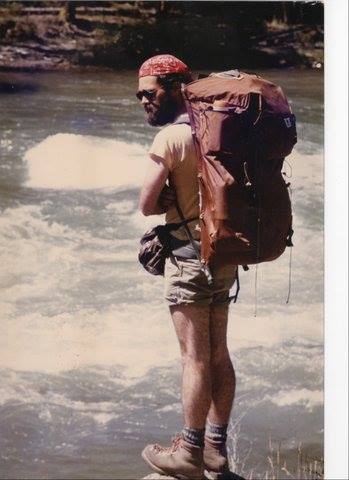Trending
Opinion: How will Project 2025 impact game developers?
The Heritage Foundation's manifesto for the possible next administration could do great harm to many, including large portions of the game development community.
Fast travel is a crutch. It's lazy design, and it hurts the experience. A journey towards smaller worlds, meaningful movement, and getting lost.

"Fast travel" is a bit of a misnomer.
In games, the term "fast travel" doesn't refer to a galloping horse or even a jet plane. When we say "fast travel", we mean instantaneous travel, or other travel that removes the player from the game and the world.
Teleporting, especially outside diagetic means, is fast travel. Overworld travel often is not fast travel (though it has it's own issues). Here are a few easy examples to define our bounds:
—> Oblivion's map waypoints are fast travel.
—> Loading into a new zone in Deus Ex is not fast travel. (It's not a shortcut)
—> League of Legend's recall command is not fast travel. (It's diagetic, tactical, and costly)
So, what the hell is wrong with it?
Instead of allowing for downtime: it breaks pacing.
Instead of reinforcing the setting: it degrades the experience.
Instead of creating conflict: it makes movement boring.
And instead of encouraging excellent level design: it encourages sprawling expanses of blandness and bugginess.
Why make an open world game with exploration if the OPEN WORLD and EXPLORATION aren’t inherently interesting?
A platformer should be engaging to hop across, whether that’s because of threats & obstacles, mutating environs, or tight design that doesn’t force you to retrace your steps.
And, I mean, what’s a racing game if you aren’t racing?
The best parts of GTA games? Dicking the fuck around in the world, not teleporting from landmark to landmark.
Done right, you see games like Dark Souls, with spaces that wrap into each other and keep distances palatable and movement engrossing. I talked a bit about this in my Design Spotlight for The Witness (offsite link).
You also see this ethos coming back in games like Rust (and probably DayZ, H1Z1, Unturned, etc.): Are you ever alone? Are you ever safe?
You can risk that shortcut through a populated area, or you can skirt the long way, hoping to stay under cover and maybe find worse loot.
I think I first realized how much fast travel takes away from games when I was a kid playing Everquest. When I started playing early in its lifecycle, teleportation was pricey (esp. for a lowbie like me), and therefore fairly rare. A lot of travel was done on foot or by seafaring boat (BOOAAAAT IS HERE!).
This forced me to actually venture into places I probably shouldn’t so I could get to the places I wanted to be. And I discovered wonders. Fascinating changes in biomes, fauna, and moods. Areas devoid of players, abandoned for more optimal grinding grounds, yet full of designer love and care.
I had to constantly assess my surroundings; threats could be anywhere.
I stopped playing around when teleporting became commonplace.
In my brief stint with WoW, my favorite adventure was taking a puny lvl 12 mage overland from Stormwind to Ironforge. I died, a lot. But it was a ton more interesting and adventurous than some underground tunnel my friends were babbling about.
Recently, I was talking about how fascinating movement across the map of Sunless Sea is. It’s slow and the controls aren’t terribly engaging (if wonderfully simple). Yet, movement is the primary stressor of the game. And it works incredibly well. When you travel, time is passing: fuel is burning, food is eaten, and terror rises.
This constant balancing act of resources, hugging coasts then beelining across open waters while timing the running lights, builds the atmosphere. Without it, even I would bore of endless beautiful prose.
It should come as no surprise I’m making a game that takes place entirely mid-travel. In Destination Ares, you’re always in space. Even pre-game building and designing of ships isn’t technically planet-side. It’s a game about the internal conflict of a rust bucket stuck in the void nothingness between the only two places humankind has ever managed to make barely livable. What’s that like? What’s it take to survive? As the computer keeping things running, you’re not responsible for launch and landing, just existing.
Of course, that’s an extreme. Other games have done the travel experience with an eye looking outward: Oregon Trail, FTL, and One Way Heroics (to name a few personal inspirations and favorites).
There are spaces here many of games fail to explore. The grueling nature of monotony. Isolation. Being stuck alone when trouble comes. The raw intensity of putting one foot in front of the other, especially as it gets harder and harder.
I’ll admit it, I like travel. And I don’t mean I like lounging under a palm tree shade with a mai tai somewhere (though no complaints). I mean I like the experience of going from place to place.
I like scrambling up talus and trudging down mountains. I like drinking beers and babbling on a train with a bunch of other travelers. I like napping on the floor between legs of a flight. I like blasting the music and the A/C on a long car ride through the desert. I like watching people shuffle about their day on a bus or subway, being present in this sublime ubiquitousness.
Mostly importantly, I like getting lost.
I like the stress of it, and I like the moments of
contemplation and
reflection and
meditation
It’s beautiful and engaging unlike anything else.
So, here’s a challenge to my fellow game designers: cut out the fast travel; refuse lazy design. Create tighter, more interesting spaces that wrap on themselves. Craft movement systems that are challenging and threats that won’t let you forget. Build a world worth exploring, re-exploring, and wandering through again and again and again.
Good luck out there.

Read more about:
BlogsYou May Also Like